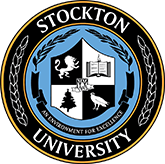A Journey of Dedication and Discovery
Fall 2025 Issue
Meet Min Kook Kim
Written by Dr. Min Kook Kim
The abundant pine trees of Southern New Jersey remind me of South Korea, where I grew up. I attended schools surrounded by beautiful natural settings, which helped me become familiar with and appreciate natural resources. However, witnessing many of these resources vanish in the name of development, I felt there might be a way to help establish a balance between development and conservation. That became my motivation to study the environment, natural resources, sustainable development, and geospatial technology.
After receiving a BEc from Chung-Ang University, South Korea, I completed an MA at Seoul National University, and soon after headed to the U.S., with my destination being the State University of New York at Buffalo (UB), where I acquired a MUP. Later, I completed my doctoral degree at the University of Maine (Ph.D. in Forest Resources). Both institutions in the U.S. have the National Center for Geographic Information and Analysis (NCGIA), enabling me to benefit from extensive geospatial resources offered by multiple academic units. I am also a certified geospatial educator (GeoEdC), conferred by the National Geospatial Technology Center of Excellence (GeoTech Center).
As you may guess, my research and teaching interests focus on the role of geospatial technology in natural resource management and conservation. More specifically, as part of data analytics and information technology, I am interested in using Geographic Information Systems (GIS) and remote sensing to examine human impacts on the environment in parks, public lands, and protected areas. I am currently conducting two projects for Acadia National Park.
In the first project, funded by the Schoodic Institute at Acadia National Park, I am emphasizing the utility of remote sensing technology as a way of monitoring visitor-induced impacts and eventually assessing the efficacy of management strategies designed to enhance vegetation recovery at high-use destinations in the park. In the second project, I am testing the utility of remote sensing data, specifically radiometrically calibrated top-of-atmosphere radiance (TOAR) in comparison to atmospherically corrected surface reflectance (SR), for detecting vegetation cover changes across the major summits in the park. Soon, based on my research expertise, I will undertake a project entitled “Mapping Vegetation Cover Change Dynamics in Wharton State Forest Using High Spatial Resolution Remote Sensing Data,” funded by Stockton University (R&PD main round, 2025), and I am pleased to expand my research into the Pine Barrens here in the state.
Prior to joining Stockton University in Fall 2024, I was a faculty member at Marshall University in West Virginia for about 14 years. There, I taught various courses on natural resources and protected area management, human dimensions of natural resources, and geospatial technology and applications (GIS/data systems/remote sensing).
I am delighted to join a vibrant learning community that values student engagement, diversity, and mutual respect. I hope that my interdisciplinary background and teaching/research experience will provide valuable resources and support you as you shape and prepare your future careers in the fields of environmental science/studies, natural resources, sustainable development, and geospatial technology. Please know my office door at A&S 220 is always open if you would like to stop by with questions or to say hello.



